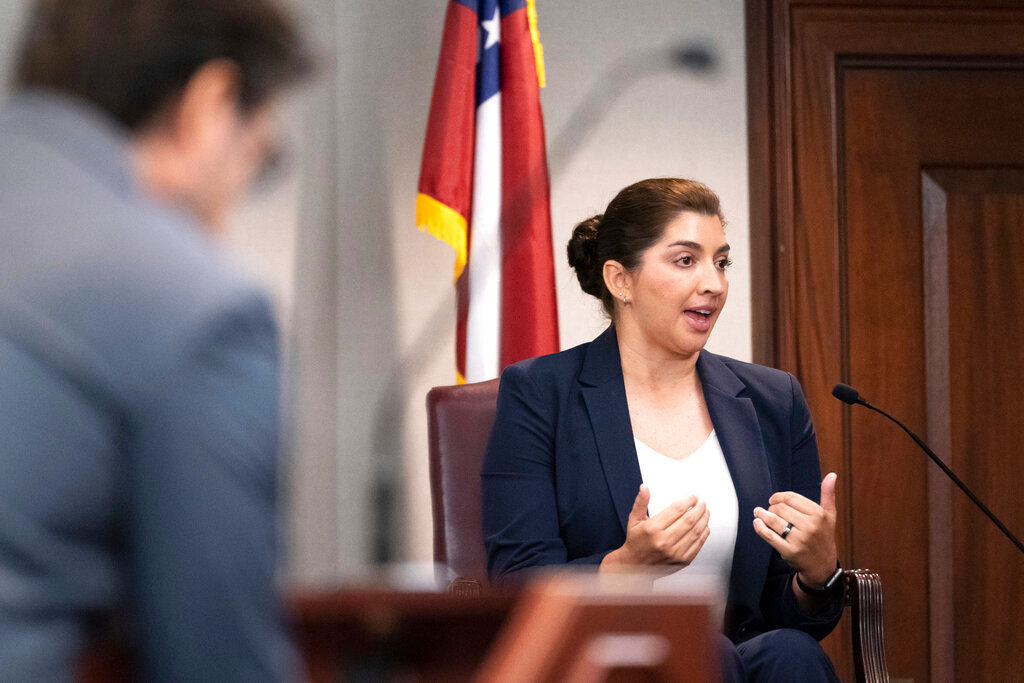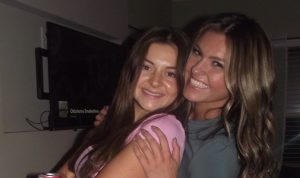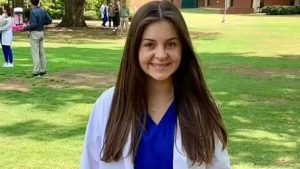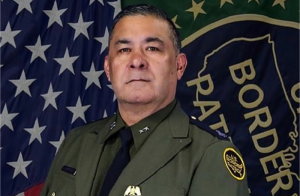Jurors in the Ahmaud Arbery trial got to see on Monday the graphic, close-up police photos of the gunshot wounds that killed him.
The jurors also heard the testimony of the first officer to find the 25-year-old Black man bleeding in the road, who said that he did not try to render medical aid because it would not have been safe.
Glynn County police Sargent Sheila Ramos walked the jury through dozens of crime scene photos she took about an hour after the shooting. Several jurors could be seen squirming as Ramos showed Arbery’s body lying in the street under a bloodstained covering. Other images showed close-up views of the gunshot wounds to his wrist as well as grievous injuries to his chest and underneath one of his arms.
Three white men are on trial for murder and other crimes in the slaying of Arbery, who was chased and shot on February 23, 2020, after he was spotted running in a neighborhood just outside the port city of Brunswick in the state of Georgia.
Outside the courthouse, Arbery’s mother said that she was confused why more was not done to help her badly wounded son.
“He had a guy lying in the road who was covered in blood. I can’t understand why he didn’t render aid,” Wanda Cooper-Jones said.
Inside the courthouse, Ricky Minshew, then a Glynn County police patrol officer, testified before the jury that he arrived at the scene in the Satilla Shores subdivision about a minute after the gunshots sounded. Arbery was lying facedown in the street with blood pooling around him.
Minshew testified that he heard Arbery make a noise he described as a “death rattle.” The officer radioed for 911 operators to send emergency medical responders, but said he did not have the training or equipment to treat such serious injuries.
“Without having any other police units to have my back, there was no way I could switch to do anything medical and still watch after my own safety,” Minshew said.
Father and son Greg and Travis McMichael armed themselves and used a pickup truck to pursue Arbery after they spotted him running in their neighborhood. A neighbor, William “Roddie” Bryan, joined the chase and took cellphone video of Travis McMichael shooting Arbery in the street at close range.
No arrests were made for more than two months until the video of the killing leaked on social media, sparking an outcry amid a national reckoning over racial injustice. The Georgia Bureau of Investigation took over the case from local police. Both McMichaels and Bryan were soon charged with murder and other crimes.
Defense attorneys said the men were justified to chase and attempt to detain Arbery because he had been recorded by security cameras inside a nearby home under construction and they suspected he was a burglar. They say Travis McMichael fired in self-defense when Arbery attacked him with fists and tried to grab his gun.
The jury seated Friday for the trial is disproportionately white. Superior Court Judge Timothy Walmsley allowed the jury to be sworn over the objections of prosecutors, who said several Black potential jurors were excluded because of their race, leaving only one Black juror on the panel of 12.
(With AP inputs)






